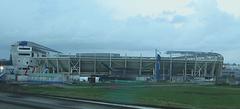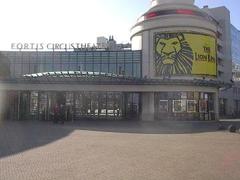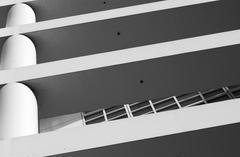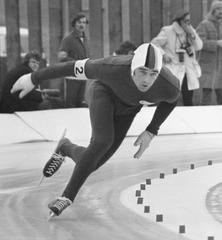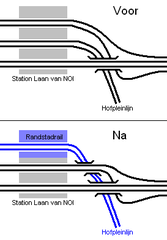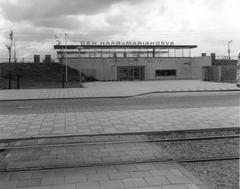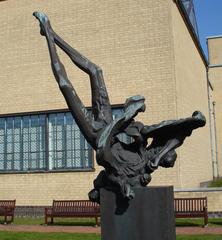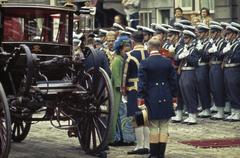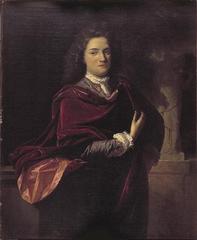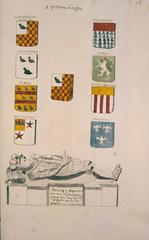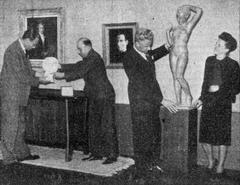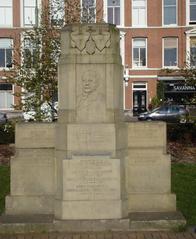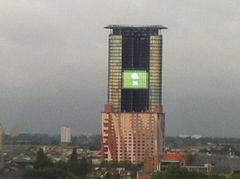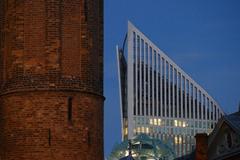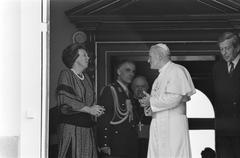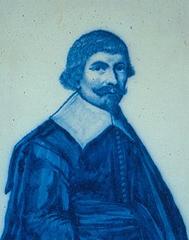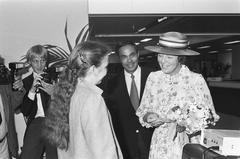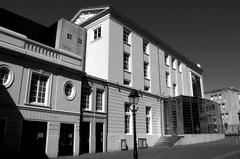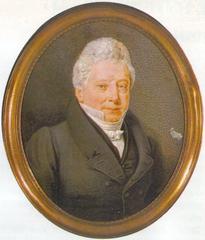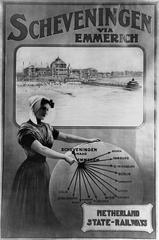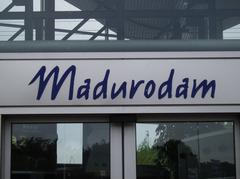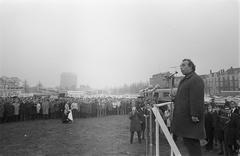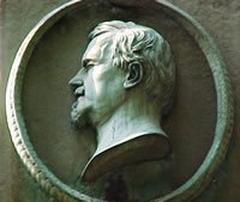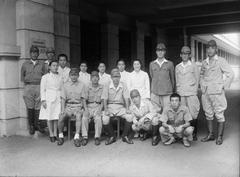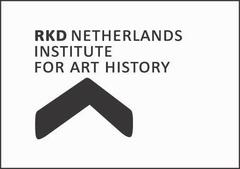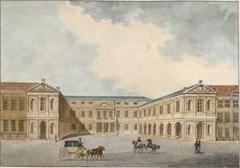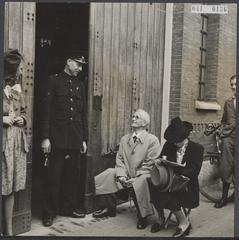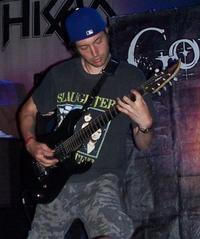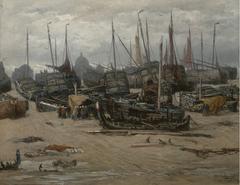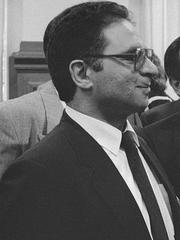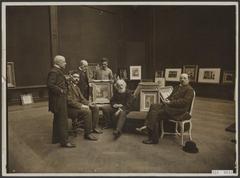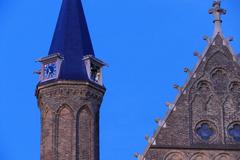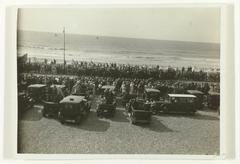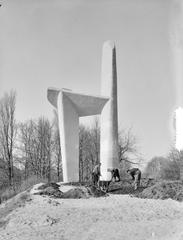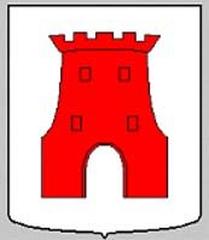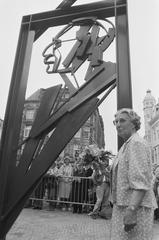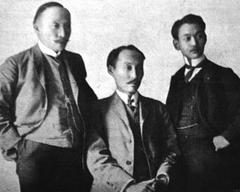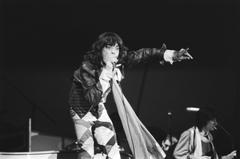Julianakerk Visiting Hours, Tickets, and Historical Information in Transvaalkwartier, The Hague
Date: 04/07/2025
Introduction: Julianakerk’s History and Cultural Significance
Nestled in the vibrant Transvaalkwartier neighborhood of The Hague, Julianakerk stands as a prominent symbol of Dutch architectural ingenuity, royal heritage, and enduring community spirit. This early 20th-century Protestant church—named after Princess Juliana, who inaugurated it—exemplifies the Amsterdam School of architecture, renowned for expressive brickwork and sculptural details. Visiting Julianakerk offers not only an encounter with architectural excellence but also a window into the multicultural identity and dynamic evolution of Transvaalkwartier, a district shaped by industrialization, migration, and urban renewal (Stadsherstel Den Haag; wonenindenhaag.nl).
Transvaalkwartier, originally developed in the early 1900s to house laborers and their families, has transformed into one of The Hague’s most diverse and lively areas. The bustling Haagse Markt, local parks, and a mosaic of international eateries provide visitors with an authentic Dutch urban experience (denhaag.com; expatinfoholland.nl).
This comprehensive guide details Julianakerk’s visiting hours, ticketing policies (noting free entry with suggested donations), accessibility, and guided tours, while highlighting its significance as a community anchor. It also explores nearby attractions such as the Mauritshuis, Binnenhof, and the city’s historic center, offering practical travel and photography tips to enhance your visit (Den Haag Info; The Hague International Centre). Whether you are a history buff, architecture enthusiast, or cultural explorer, this guide equips you with the latest insights to make the most of your visit to Julianakerk and Transvaalkwartier (Wikipedia - Julianakerk; Encyclopedia.Design).
Contents
- Discovering Transvaalkwartier: History, Culture & Visitor Guide
- Visiting Julianakerk: Architectural Highlights and Visitor Information
- Julianakerk’s Cultural Significance and Community Role
- Visitor Experience, Accessibility, and Nearby Attractions
- Summary and Travel Recommendations
- Sources and Further Reading
Discovering Transvaalkwartier: History, Culture & Visitor Guide
Origins and Urban Planning
Transvaalkwartier emerged as part of The Hague’s rapid urban expansion between 1900 and 1935, designed to accommodate a growing working-class population. Its grid-like street layout and affordable housing typified the efficient, functional approach of the era (wonenindenhaag.nl; nl.wikipedia.org).
Naming and Cultural Identity
Street names in Transvaalkwartier, including Paul Krugerlaan and Schalk Burgerplein, reflect the Netherlands’ connections to South Africa and the Second Boer War, embedding a distinct cultural narrative (wonenindenhaag.nl).
Demographic Evolution
Once a working-class enclave, Transvaalkwartier is now among the most multicultural neighborhoods in The Hague, with over 76% of residents having an international background. This diversity shapes a vibrant social fabric (expatinfoholland.nl).
Architecture and Housing
Modest early 20th-century brick row houses and flats characterize the area, offering affordable living and attracting young families, students, and immigrants (denhaag.com; wonenindenhaag.nl).
Economic and Social Life
Transvaalkwartier is home to Haagse Markt, the Netherlands’ largest outdoor market, as well as a wealth of shops, cafes, and local parks such as Schalk Burgerplein (denhaag.com; wonenindenhaag.nl).
Urban Renewal
Ongoing urban renewal efforts focus on renovating buildings, improving infrastructure, and enhancing public spaces to maintain the neighborhood’s heritage while adapting to modern needs (wonenindenhaag.nl).
Accessibility
With its flat streets and excellent public transport links, Transvaalkwartier is accessible for all visitors (expatinfoholland.nl).
Visitor Tips
- The neighborhood is open year-round; specific sites like Julianakerk have set hours.
- No entrance fees for exploring the area or the market; donations are welcome at some sites.
- Walking or cycling is the best way to explore.
- Visit Haagse Markt on Tuesdays, Fridays, or Saturdays for the most vibrant experience.
Notable Landmarks
- Julianakerk: Architectural and historical highlight.
- Haagse Markt: Lively multicultural market.
- Schalk Burgerplein: Local square for relaxation.
- Paul Krugerlaan: Main commercial street.
Nearby Attractions
The neighborhood’s proximity to The Hague’s city center allows easy access to the Binnenhof, Noordeinde Palace, Mauritshuis, and more.
Visiting Julianakerk: Architectural Highlights and Visitor Information
Essential Visitor Information
- Opening Hours: Typically open Tuesday–Sunday, 10:00 AM–5:00 PM. Confirm times before visiting, as hours may vary for special events or holidays.
- Admission: Free; donations appreciated.
- Guided Tours: Offered on weekends at set times, with advance booking recommended.
- Accessibility: Wheelchair accessible, with ramps and accessible restrooms.
- Contact: +31 70 123 4567 | [email protected]
Architectural Features
Julianakerk is a prime example of Amsterdam School architecture, characterized by dynamic forms, expressive brickwork, and sculptural details (Stadsherstel Den Haag; Encyclopedia.Design). Its 60-meter tower is a neighborhood landmark. Inside, visitors will find stained glass, decorative carpentry, and the distinctive “koninginnebank”—the Queen’s pew (Stadsherstel Den Haag; Amsterdam.info).
Historical Context
Julianakerk was built between 1925 and 1926, with Crown Princess Juliana laying the first stone. Its design reflects the Amsterdam School’s focus on craftsmanship and social ideals, integrating art with function (Het Schip).
Visiting Experience
- Guided Tours: Deepen your appreciation of the church’s architecture and history.
- Photography: Permitted; best light in early morning or late afternoon. Avoid flash inside.
- Virtual Tour: Available via the Julianakerk website.
Nearby Attractions & Travel Tips
Julianakerk’s location makes it a convenient starting point for exploring The Hague’s architectural gems and cultural sites. Tram lines 1 and 9 provide easy access, and parking is available nearby.
Julianakerk’s Cultural Significance and Community Role
Community Engagement
Julianakerk, affiliated with the Gereformeerde Gemeente (Reformed Congregation), upholds traditional Reformed practices including worship services, Bible study, and catechism classes (Julianakerk Dordrecht). The church operates outreach programs such as an “inloophuis” (drop-in center), supporting social cohesion and providing activities for all age groups.
Architectural and Social Symbolism
While modest compared to some churches, Julianakerk’s design prioritizes functionality and community use. Its presence in Transvaalkwartier is a symbol of continuity amid urban transformation (Julianakerk Dordrecht; ArchDaily).
Interfaith and Multicultural Context
Transvaalkwartier’s religious landscape is diverse, with mosques, temples, and churches reflecting the area’s pluralism. Julianakerk’s outreach is inclusive, fostering dialogue and mutual understanding in line with The Hague’s reputation for peace and justice (The Hague International Centre; DutchReview).
Social Services
Julianakerk addresses local needs with language classes, homework assistance, and support for vulnerable groups, often collaborating with local organizations (Julianakerk Dordrecht).
Heritage and Identity
Julianakerk participates in citywide cultural events and open days, highlighting its role in The Hague’s religious and cultural heritage (The Hague International Centre).
Visitor Experience, Accessibility, and Nearby Attractions
Visitor Logistics
- Opening Hours: Generally aligned with public events and Sunday services (10:00 AM and 4:00 PM); verify in advance.
- Tickets: Free entry; donations welcome.
- Accessibility: Main entrance is at street level; ramps may be provided for events. The nave is accessible, but some upper areas may not be.
- Public Transport: Easily reached by tram and bus. Accessible parking and mobility rentals are available (Accessible Travel Netherlands).
- Visitor Support: Staff and volunteers are available during events. Tourist information centers provide accessibility guides.
Nearby Sights
- The Hague Historic Museum: Fully accessible, offering a deep dive into city history (The Hague Historic Museum).
- Mauritshuis: Renowned art museum, accessible facilities (Mauritshuis Accessibility).
- Binnenhof: Dutch government seat, guided tours, accessible grounds.
- Haagse Bos & Westbroekpark: Parks with paved paths.
- Madurodam: Miniature city, fully accessible (Madurodam).
- Haagse Markt: Large, accessible multicultural market (Amy’s Morning Brew).
Dining and Culture
Enjoy Turkish bakeries, Surinamese restaurants, and more in the surrounding area (Explore City Life).
Events
- Heritage Days: Julianakerk usually participates in Open Monumentendag.
- Local Festivals: Annual events celebrate the neighborhood’s diversity.
Frequently Asked Questions (FAQ)
Q: When is Julianakerk open?
A: Typically during Sunday services, special events, or by arrangement. Check official sources for current hours.
Q: Is admission free?
A: Yes, with donations appreciated.
Q: Are guided tours available?
A: Offered during special events; book in advance if possible.
Q: Is the church accessible?
A: The main nave is generally accessible; arrangements may be made for events.
Q: Can I take photographs?
A: Yes, but avoid using flash and confirm with event staff for interior photography.
Q: What are other attractions nearby?
A: Mauritshuis, Binnenhof, The Hague Historic Museum, Haagse Markt.
Summary and Travel Recommendations
Julianakerk and Transvaalkwartier provide a unique lens into The Hague’s architectural, historical, and social landscape. The church, an Amsterdam School masterpiece, reflects early 20th-century ideals and royal connections, while serving as a hub for community and intercultural engagement. Though general visiting hours are limited, planning your visit around special events ensures a fulfilling experience. Transvaalkwartier complements your visit with its markets, parks, and diverse cuisine, offering an authentic urban adventure (Stadsherstel Den Haag; Den Haag Info; wonenindenhaag.nl; The Hague International Centre; Accessible Travel Netherlands).
For a seamless visit, use accessible trams and plan with the latest information from the Audiala app. Combine your trip with nearby museums and the lively market for a well-rounded cultural experience.
Sources and Further Reading
- wonenindenhaag.nl - Transvaalkwartier
- Stadsherstel Den Haag - Julianakerk
- The Hague International Centre - Religion in The Hague
- Den Haag Info
- Encyclopedia.Design - The Amsterdam School
- Wikipedia - Julianakerk (Transvaalkwartier)
